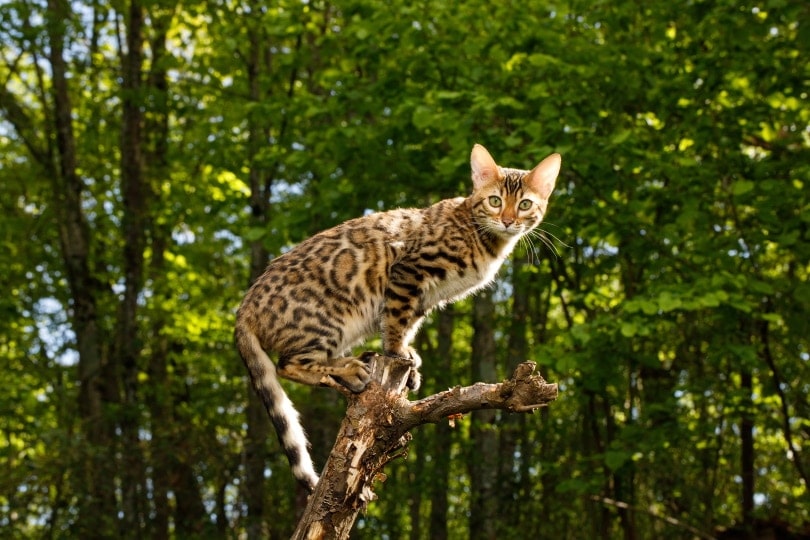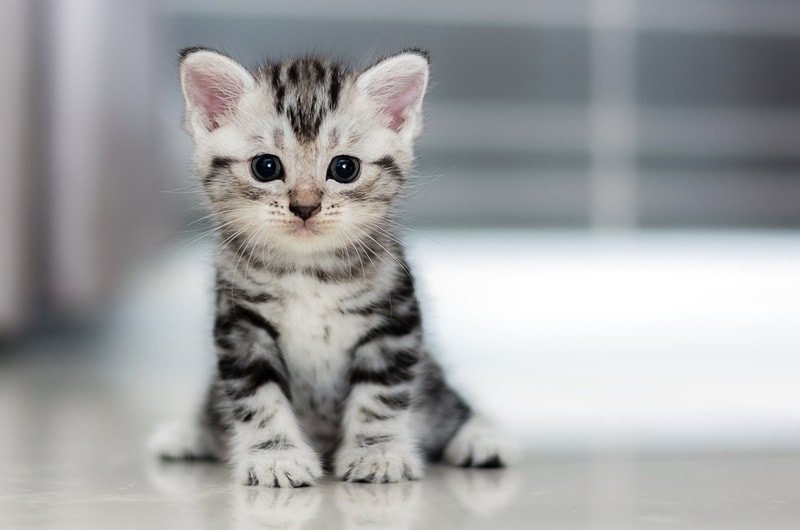Why Do Cats Watch TV? What Science Says
By Ashley Bates
Updated on
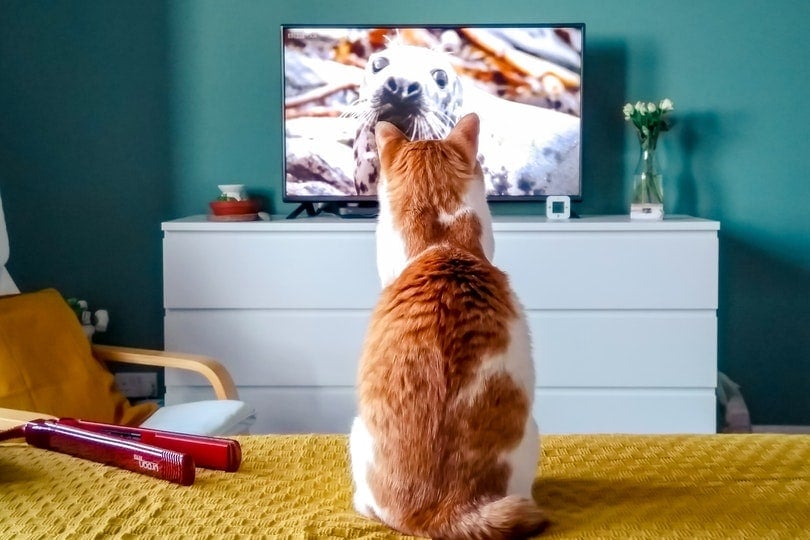
You might have caught your feline staring at your favorite Netflix series with intent. Sometimes, it’s hard to know exactly what is going through their mind at any given time. So, when they are soaking up your TV time, sharing in the fun, are they aware of what they’re seeing?
For example, if they see another animal on TV, does it register? The answer is a bit complicated, but we can sum it all up for you. Read on!
Cats and TV—What’s the Deal?
So, you’re likely reading this because your very own kitty loves the flatscreen. Cats are incredibly observant creatures, so it’s no wonder they catch on. If you have a more alert and active kitty, you might notice that they have more of an interest, whereas your lazy cat could not care less.
So, what gives? Is it curiosity? Understanding? Well, a little of both, it seems. Cats naturally love quick movements as it sparks their prey drive. They can follow along with great speed and accuracy, which makes sense given they are fabulous hunters by design.

What Research Says
While there is limited research on the specific subject, there was a study published in September 2008 by Applied Animal Behavior Science.
- 1 control condition with no visual stimulation
- 1 experimental condition with a blank TV screen
- 1 experimental condition with human images
- 1 experimental condition with inanimate movement
- 1 experimental condition with animate movement
Out of 125 cats, each was subjected to one area of the experiment, totaling 25 cats per condition. Impressively, only 6.1% showed interest in the stimuli.
Cats did not respond at all to a blank TV or no visual stimulation at all. It wasn’t until the movement of animate objects that a few really showed any care at all, and the numbers were still pretty low.
Cats Seem to Conflate TV Images with Prey
Just like letting your cat chase a feather toy or laser pointer, some are very stimulated when they see prey on TV. Research in the study as mentioned above finds this especially true when they don’t have access to windows showing the outdoors.
While this is usually not a problem, mostly sparking curiosity and nothing more, some more determined or aggressive cats might try to attack. That can be both harmful to your cat and television. So, make sure to keep an eye on potentially triggering images on the TV.
Potential Benefits of TV for Cats
There is some indication that TV might be beneficial to some cats who don’t get natural exposure to windows as a form of enrichment. However, the verdict is still out on how many cats would actually acknowledge or benefit from having screens around them regularly.
Since cats are very visually stimulated, something might prove to be better than nothing. However, cats with more prey drive might actually elevate their prey drive, which will build up irritation if there is no outlet.
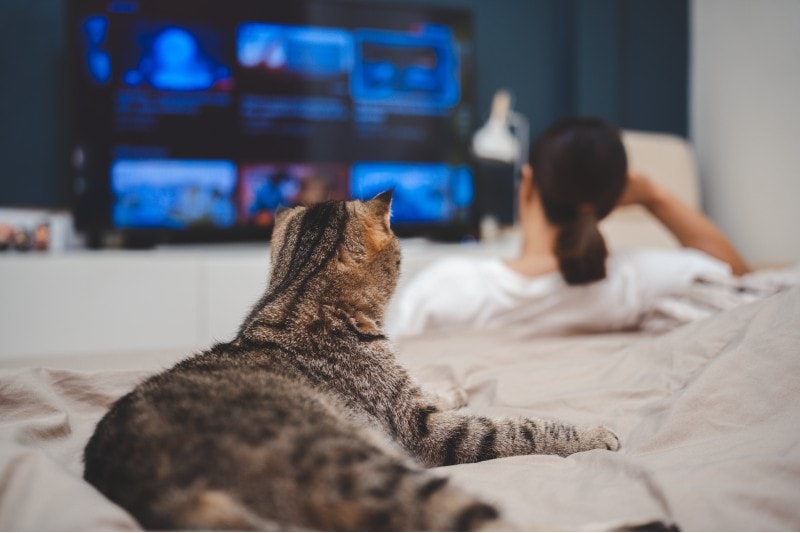
Downfalls of TV for Cats
If a cat has an aggressive streak, it might get injured in your home if they are triggered by TV. Not to mention, your set can fall and break consequently. Either way, some cats require supervision if they see these sorts of images—like fast-moving objects, birds, or other forms of fast-moving prey.
Older Vs. Newer TVs: Is There a Difference?
We all know technology is forever advancing at a rapid pace. We’ve come quite far from box TVs, including sharpening the overall visual experience of a film. As the digital TV experience is enhanced for us, it’s also improved for our cats.
With higher-quality images and quicker movement, it would be more likely to pique a cat’s interest.
How Cats’ Vision Works
Cats are crepuscular creatures, meaning they are most active at dawn and dusk. You might find it difficult to see during these hours as your perception isn’t as clear. Cats, on the other hand, are built for this. In their eyes, they are equipped with up to eight extra rods that we don’t have.
Unlike us, cats have an elliptical eye shape and larger corneas and tapetum. However advantageous this might be, we do have ten more color rods in our eyes than they do. That means we can appreciate a wider variety of colors on the spectrum.
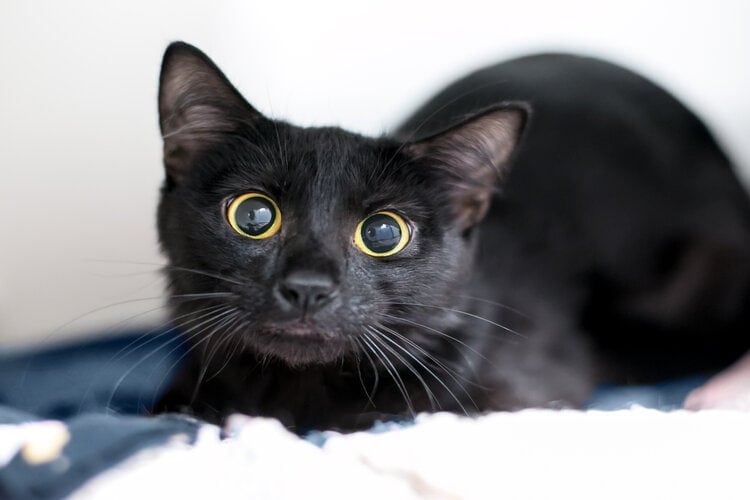
Different TV Experience
So, the fact is, we experience television images much differently from our feline friends. They see faster, slowing down the images that move too quickly for our eyes. That is why you might notice that cats will pay more attention to quick-moving images on a TV.
Nonetheless, it still doesn’t have quite enough to fully capture their attention for long.
Summary
Realistically, cats don’t show much interest in TV, so we might all learn something from their lack of desired screen time. It seems that cats would rather chase after their toys and watch birds out of a window instead of virtually.
When it comes to homeless kitties in facilities without much to entertain, enriching images on TV might be beneficial. However, most cats show no interest in TV. And those with a high prey drive might get agitated with no outlet. So, it seems that humans are the ones interested in the magic of screens for now.
See also:
Featured Image Credit: SnacksInTheBackpack, Pexels



